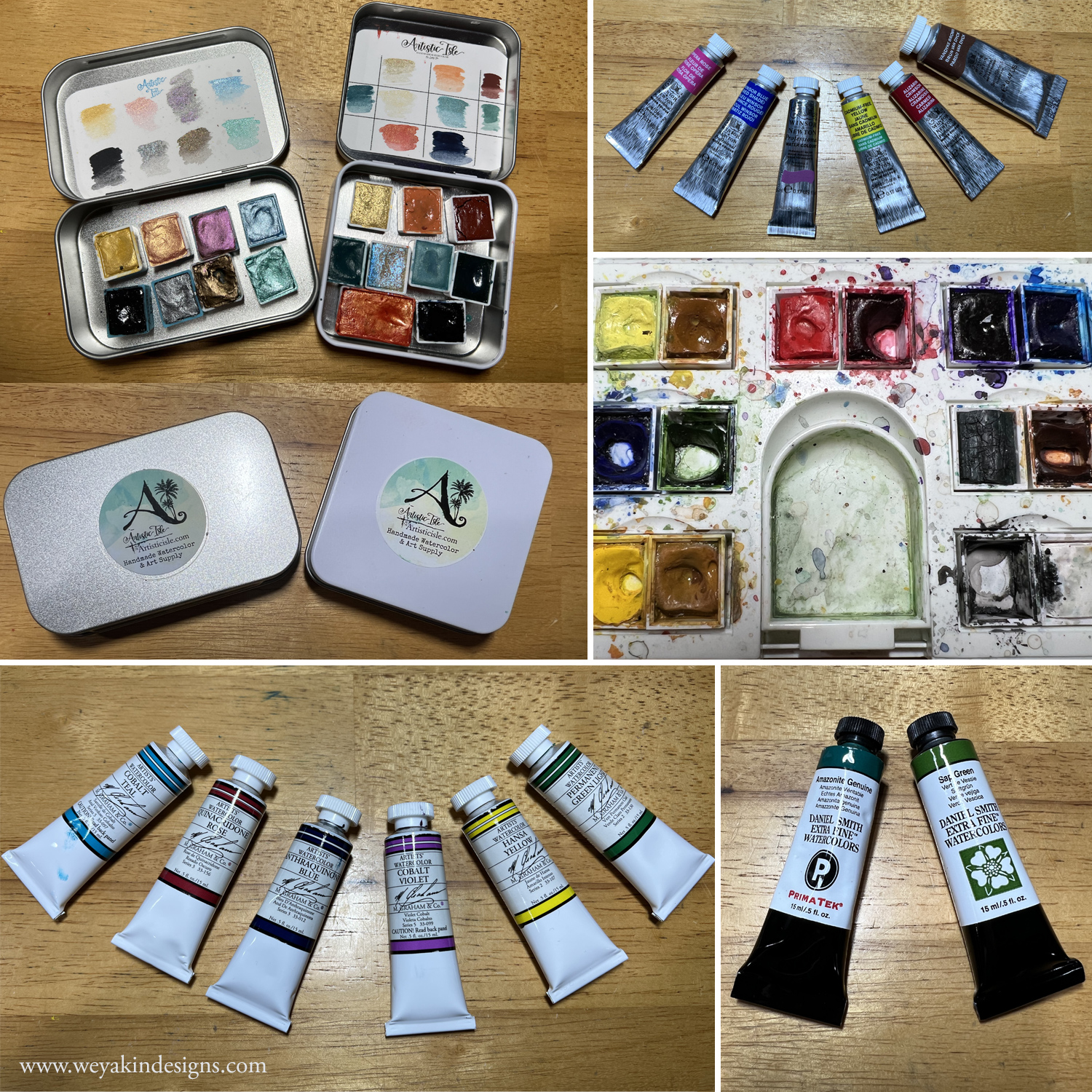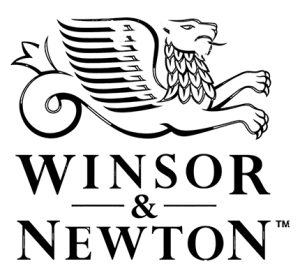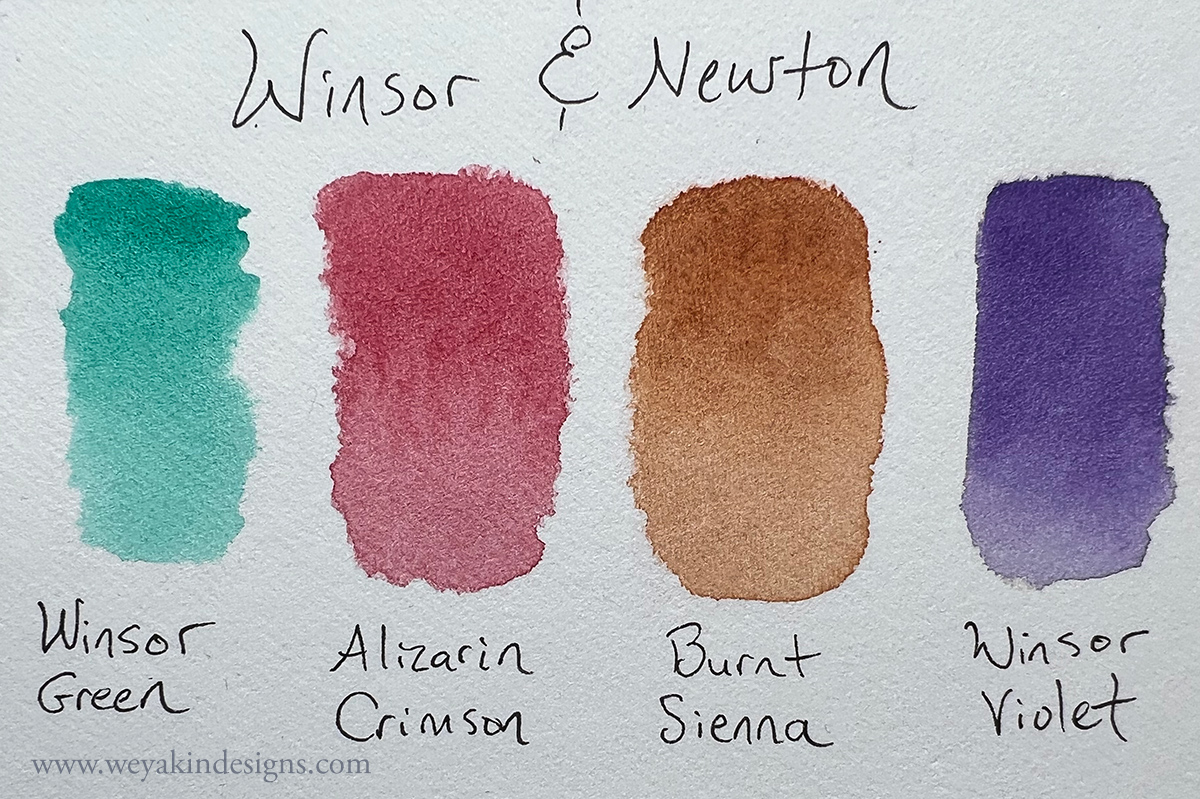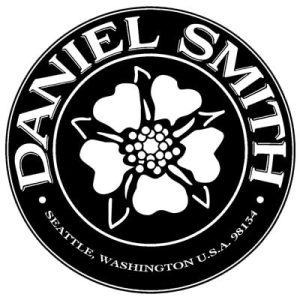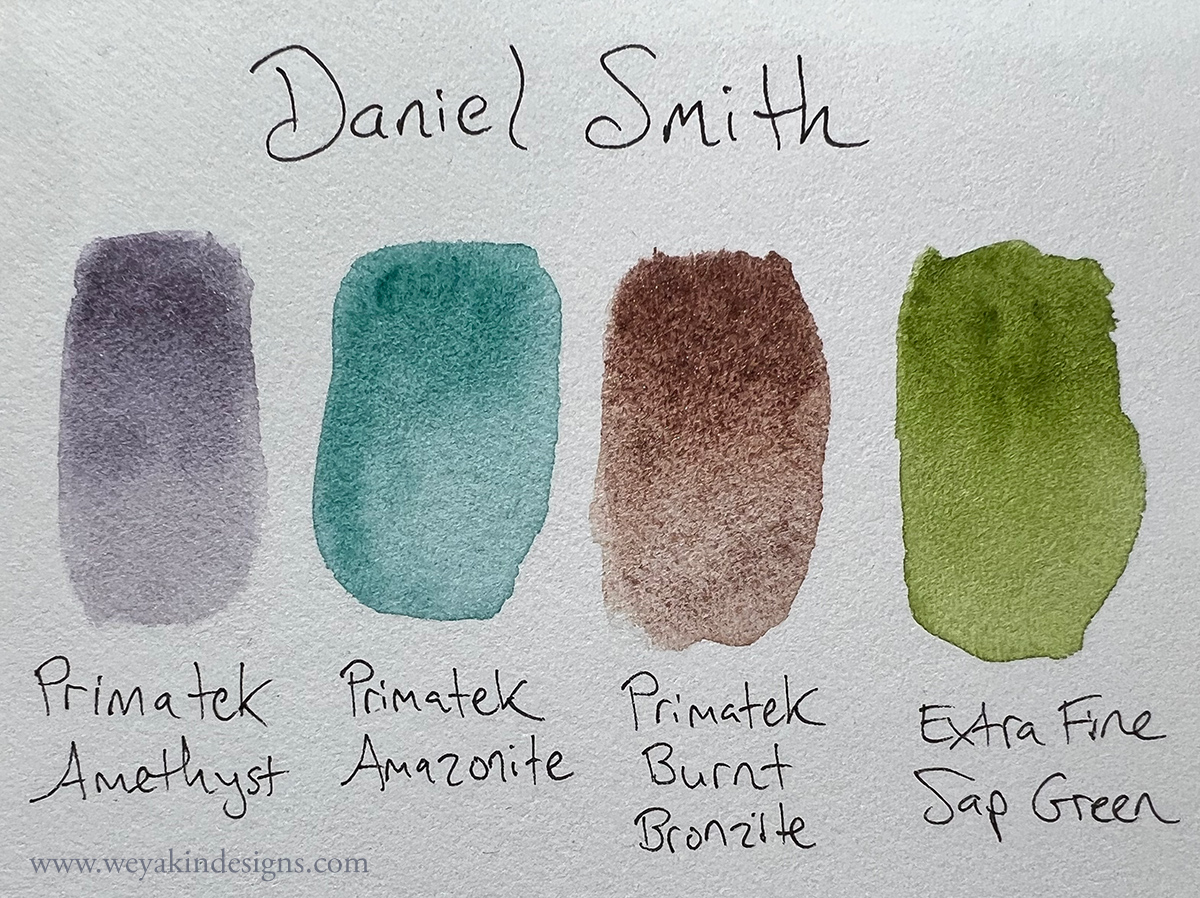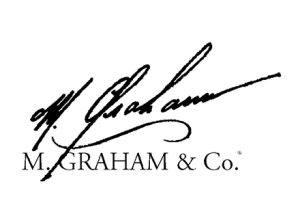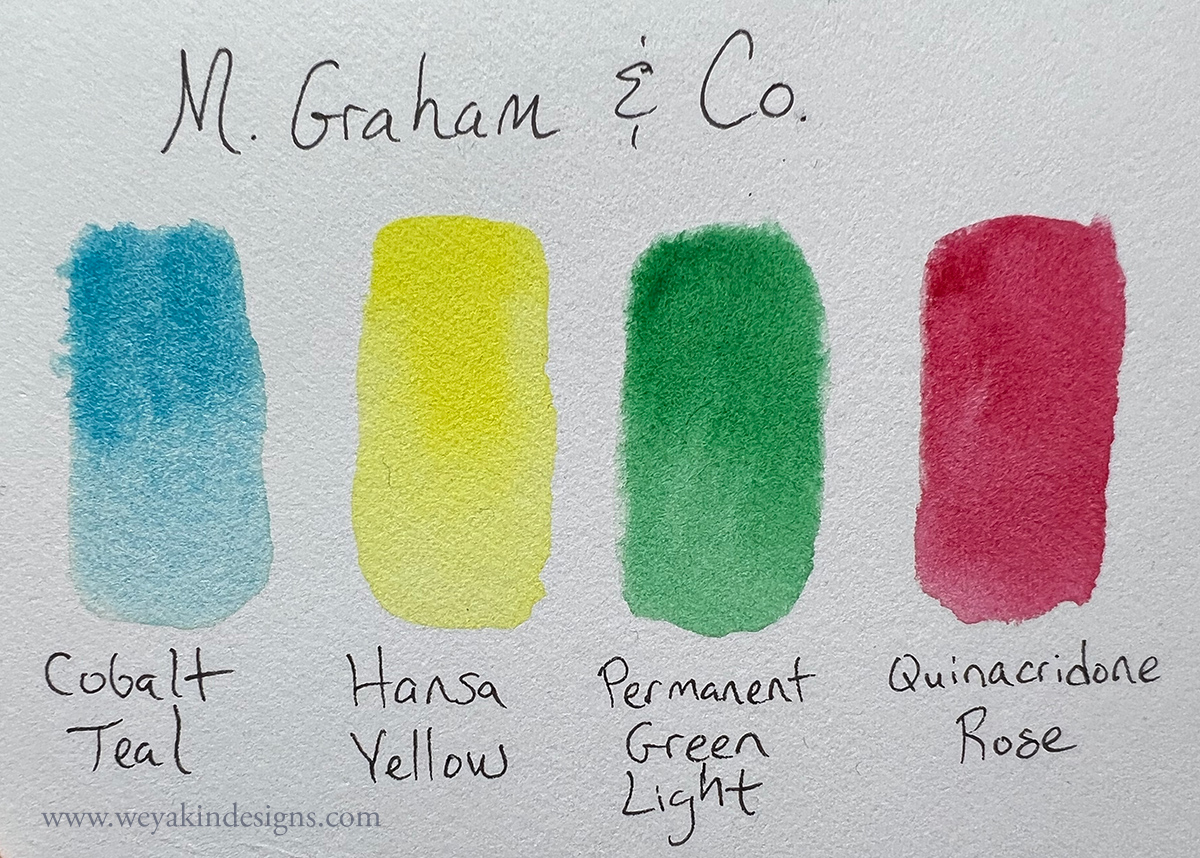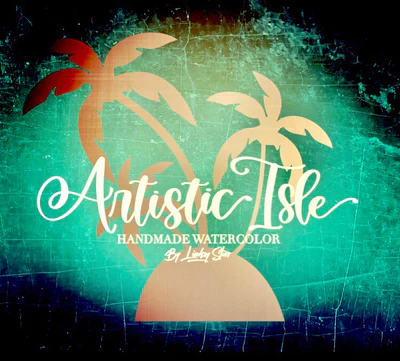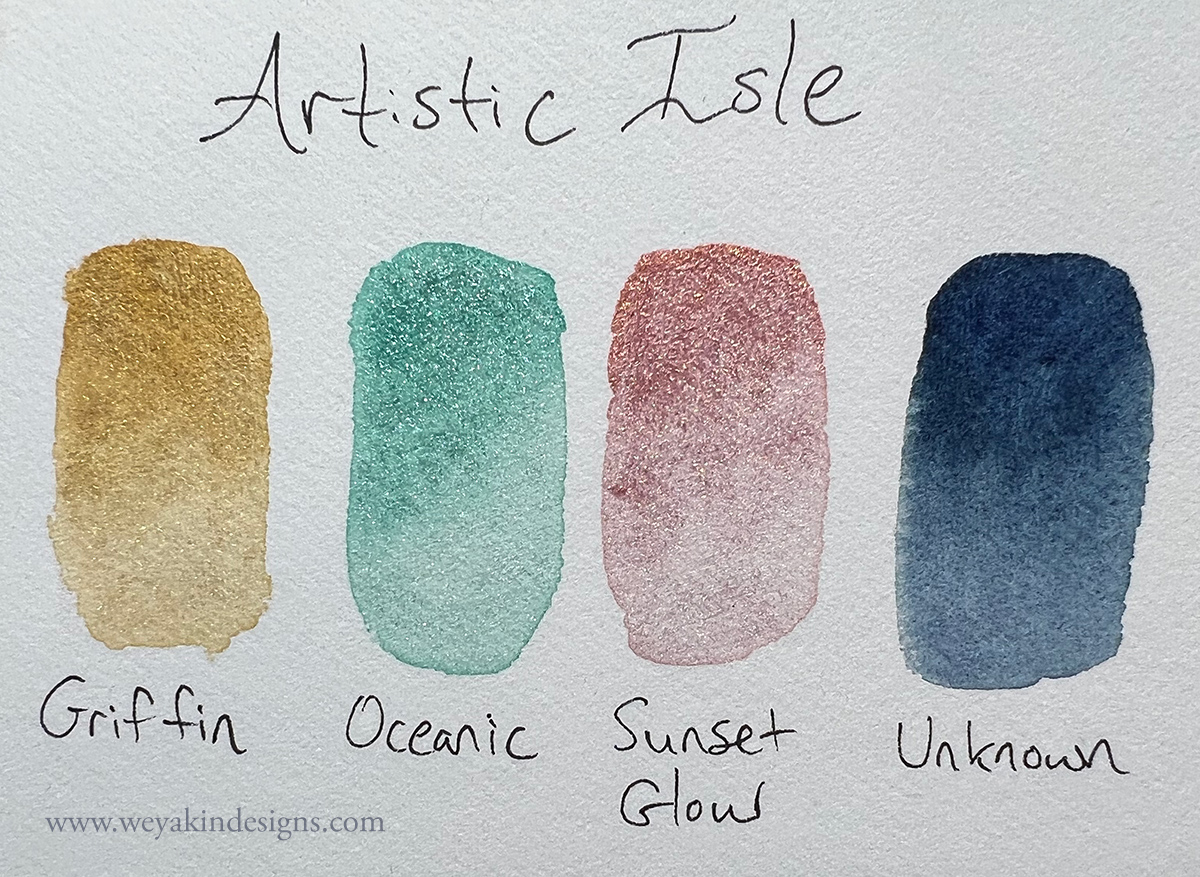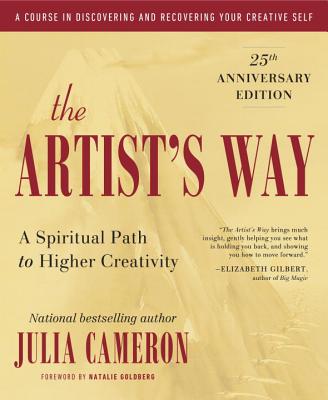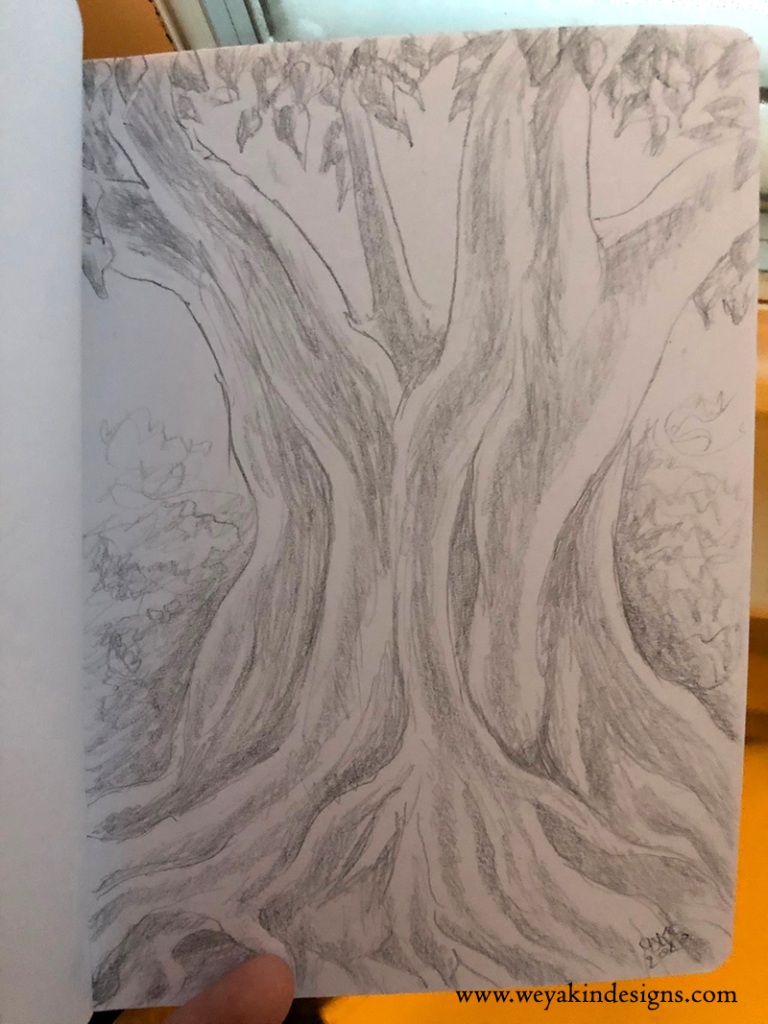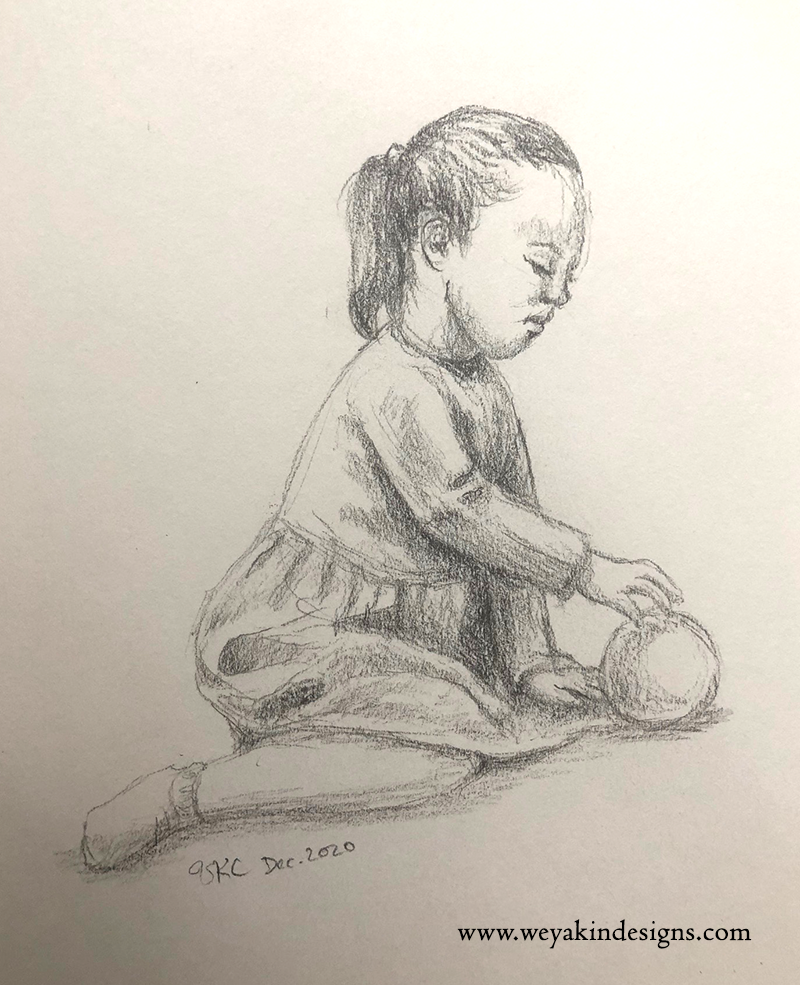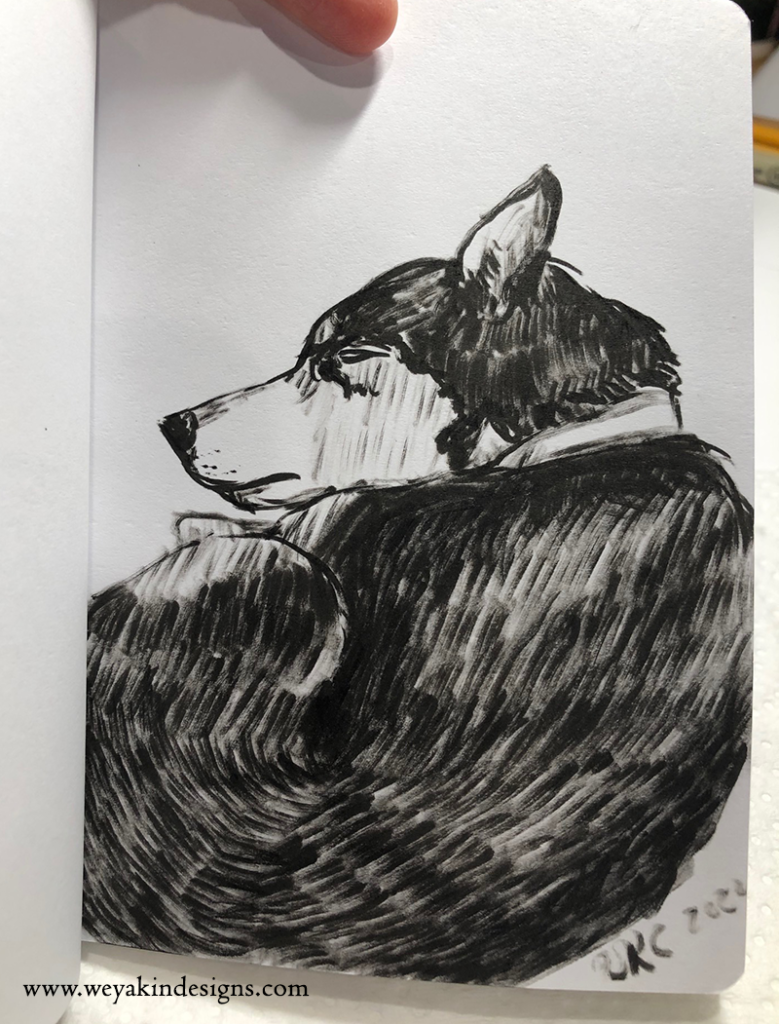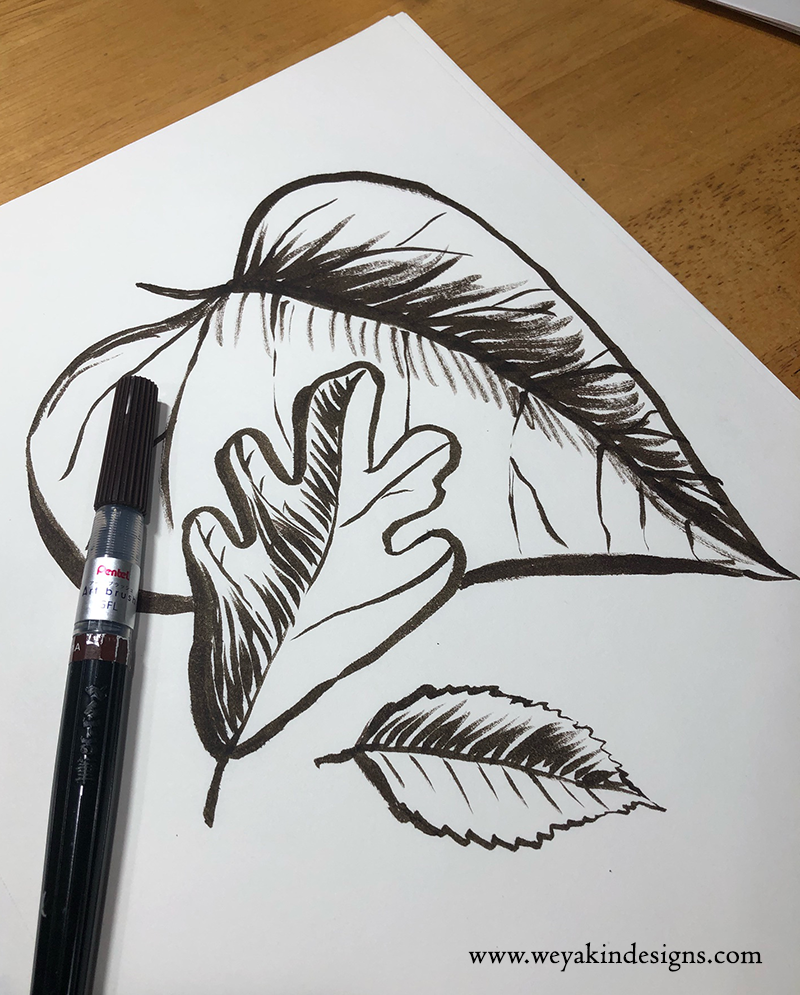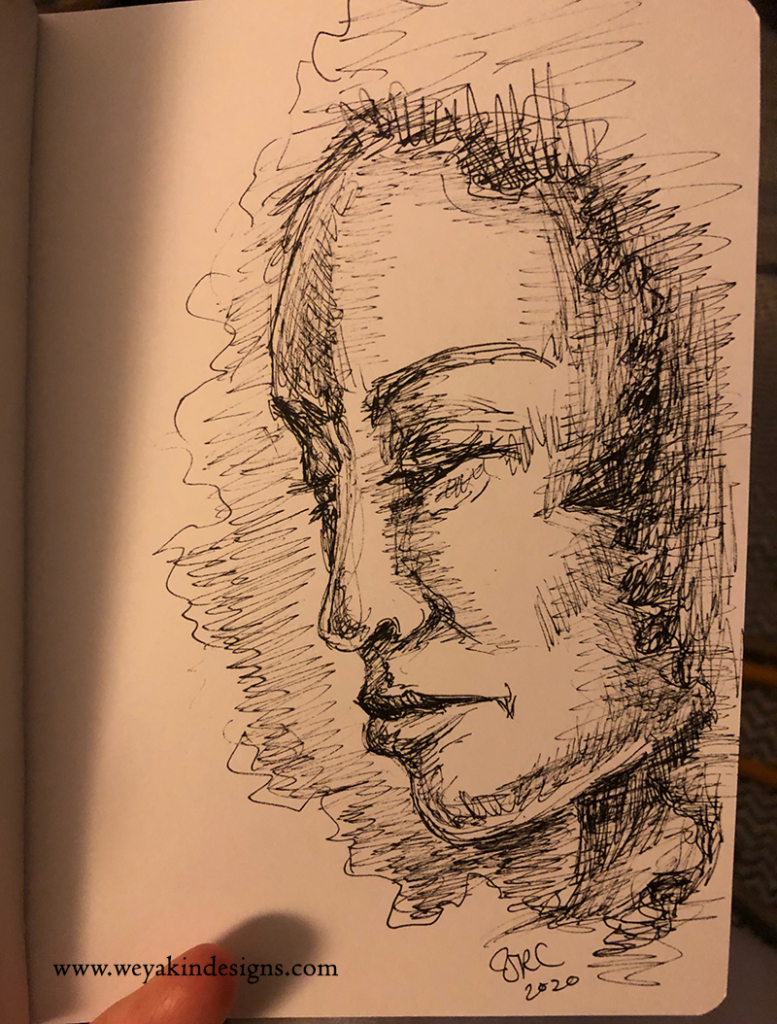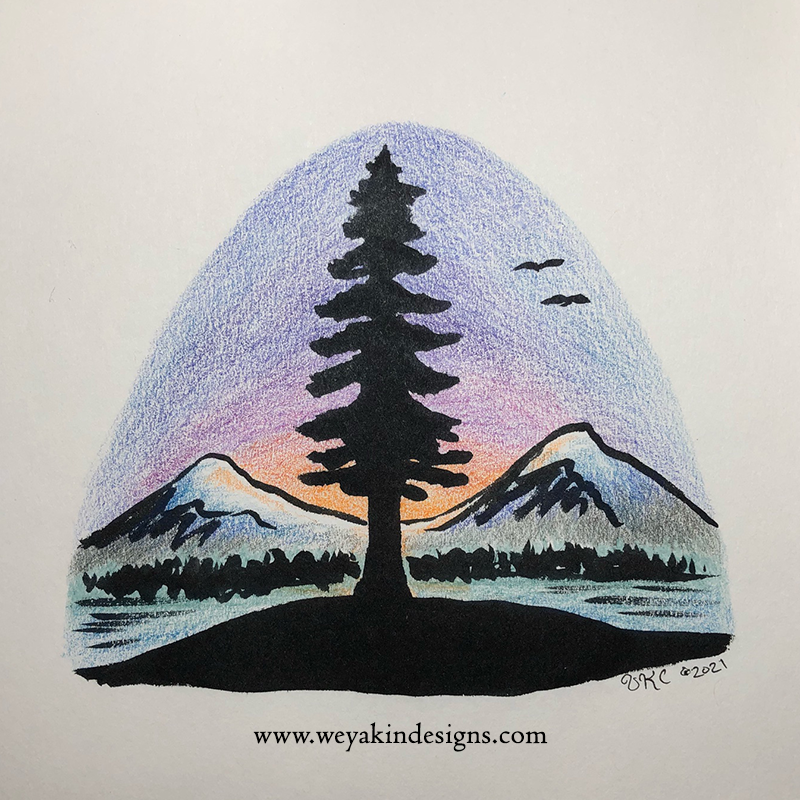An Artist’s Toolbox: Exploring Watercolor Brands
There are a lot of materials for artists to choose from in the world. How do you settle on one medium, let alone specific brands of that medium? One of my favorite ways is to explore and play with mediums, especially my favorite—watercolors. Every year, my family will find various art supplies that I probably don’t need but want to try on my holiday gift list. And sometimes they surprise me too!
I fell in love with watercolors early on when I was a kid, and even more so when I discovered watercolors outside of the standard kids’ paints. My first set of “real” watercolors was gifted to me by my parents—an extensive full-pan set of the Winsor & Newton Cotman paints (their student-grade line). It was my go-to set for many years, which I added on to with liquid tube colors here and there. When I could afford it later on, I upgraded to their professional line, which offers more vibrant and longer-lasting pigment, though with an extra price tag. I was a Winsor & Newton gal for many years.
But, like many artists, I like to play and try out new things. I love it when other people introduce me to new materials to try. One year, my brother-in-law and sister-in-law gave me several tubes of M. Graham and Co. honey-based watercolors. As stocking stuffers, my husband gave me several Daniel Smith gemstone pigment watercolors from their PrimaTek line. I gifted myself some handmade pan watercolors from Artistic Isle after watching the amazing illustrator Stephanie Law create breathtaking shimmering pieces with them. I just had to try those out. I’ve purchased a tube of this or a tube of that when I’m looking for a particular pigment. I’ve built up a nice collection of watercolors that I like to mix and match. But, I’m always looking for other things to try.
To give you a sense of just a handful of the watercolor brands out there, I wrote a little bit about my experience with four different brands: Winsor & Newton, Daniel Smith, M. Graham & Co., and Artistic Isle.
Winsor & Newton
Winsor & Newton is a standard in the art world because their products are reliable and high-quality in both student-grade to professional. They have a variety of styles and colors to choose from and they’re relatively easy to find. You can find both liquid tube style and pan style in both the student and professional grade. Beginners find Winsor & Newton nice to start with because they have a lot of sets with a variety of basic colors that make it so you don’t have to think too hard about what colors you need to get. And the Cotman student line is a lot more affordable. But, professionals will also find their choice of over 100 colors for their needs with a vibrancy that’s consistent and mixes well.
What I like about them:
Winsor & Newton has a consistent quality and range of colors to choose from—108 colors in their professional line to be exact. When I buy a tube of Winsor & Newton, I know what I’m getting and I know it’s easy to find at most art stores. I also appreciate that many of their colors come in more than one size. So, if I want just a little bit of one color, I can get a smaller 5ml tube. If I know I’m going to use a lot of a certain color, I can get the larger 14ml tube.
They also have cadmium-based colors in real cadmium (brighter color) or cadmium hues (not as bright, but overall safer and nice for student classroom situations). It’s nice to have choices. They also have a lot of mediums to use with watercolors to change up how the paint acts and what you can do with it, which can be fun to explore. I particularly love their iridescent medium.
Daniel Smith
Daniel Smith also has a wide range of watercolors to choose from, including several specialty lines. I have the most experience with the PrimaTek gemstone pigments, but I also have tried out the Extra Fine line of paints. One quality that Daniel Smith watercolors are known for is the granulation. Granulation is when the pigment separates in water, forming clumps of deeper color in some areas, which creates some of the interesting textures watercolor is known for. If you’re an artist who likes to play with texture and variations in pigment, granulation is something you’ll want.
What I like about them:
One thing I like about Daniel Smith is the consistency of quality. When you buy Daniel Smith, you know it’s high-quality and will last a long time. The Extra Fine line has a nice range of colors, which as mentioned before, granulate really nicely. This is great if you want texture and a natural flow to your color.
I really enjoy Daniel Smith’s PrimaTek line in particular. PrimaTek watercolors are made with actual gemstone pigments, including things like amethyst, bronzite, amazonite, sodalite, and garnet. Because they use actual gemstones in the pigment, many of them have a slight shimmer to them, which is a fun bonus. But, the color is also more of a muted and soft tone. Sometimes, that’s what you’re going for, so it’s nice for projects that have a softer color palette.
M. Graham & Co.
M. Graham & Co. uses a different approach for their paint production than some of the other art supply companies. One unique quality of their watercolors is that they use blackberry honey as a main ingredient. This creates a different consistency in the paint than standard watercolors both in how it spreads on the page and how it sits in your pan. This paint always remains tacky, even when exposed to air. This can be great if you prefer working with watercolors while they’re soft out of the tube. But, not so great if you want it to dry to pack it up, for example, in a travel pan.
What I like about them:
One of the things I really appreciate about M. Graham & Co. is that they use ingredients from nature as part of their commitment to preserving the environment. They also adhere to eco-friendly practices when running their business, including purchasing carbon off-sets and using renewable energy options. This is a big win for me as a consumer, knowing I’m buying from a company that cares about the Earth!
I also enjoy how M. Graham & Co.’s watercolors flow on the page. Because of the use of honey, the color spreads on the page in a very quick and smooth manner. It makes it really great for creating large washes, because it spreads so well before it dries. Their colors are also super vibrant and bright. If you want colors that pop off the page, you’ll find them in these paints. One of my favorite colors is their cobalt teal, because it’s a fantastic sky blue for children’s book illustrations that spreads on the page easily.
Artistic Isle
Artist Isle is a different kind of art supply company than the others listed here. They are a family business, run by just a small handful of people. And unlike larger art supply operations, their paints are usually limited edition. This can be both a great thing and a not-so-great thing. You know that the colors you’re getting are unique in the way that only hand-made paint can be. But, if you fall in love with a color, chances are, if you run out, you won’t find it again. Artist Isle’s watercolor paints only come in pan style, so if you prefer tubes, you’re out of luck. That said, the unique quality may make you want to try them out anyway.
What I like about them:
One of the watercolor products Artist Isle is known for is their metallic and shimmery paints. They create colors that have a lovely fairy-like shimmer and shine that adds a really magical touch to original art. They also make some colors that have two tones depending on which way the piece is facing. This can be really fun for original art in-person, but perhaps less-so for reproduced art. They do have regular watercolors that aren’t metallic or shimmery as well, and those colors are also wonderful to work with.
I love that you can find colors they create by hand that nobody else has. I just wish I could get my favorites again if I run out! As a bonus, they often give you a freebie pan when you order a certain amount and a lovely hand-written note. If you enjoy process videos, they also have some interesting reels on Instagram of the process of making their paints. I also love that their pans come with magnets adhered to the bottom so they easily fit into their watercolor tins, which makes it easy to arrange them how you want and take them with you.
I hope you found this review of watercolors helpful. No matter what brand of paint you try, it’s always fun to explore and play. As professionals, sometimes we can forget about the art of play, but it’s also one of the most important parts of our creative process. If you want to break out of a creative rut, maybe try something new just for fun!

